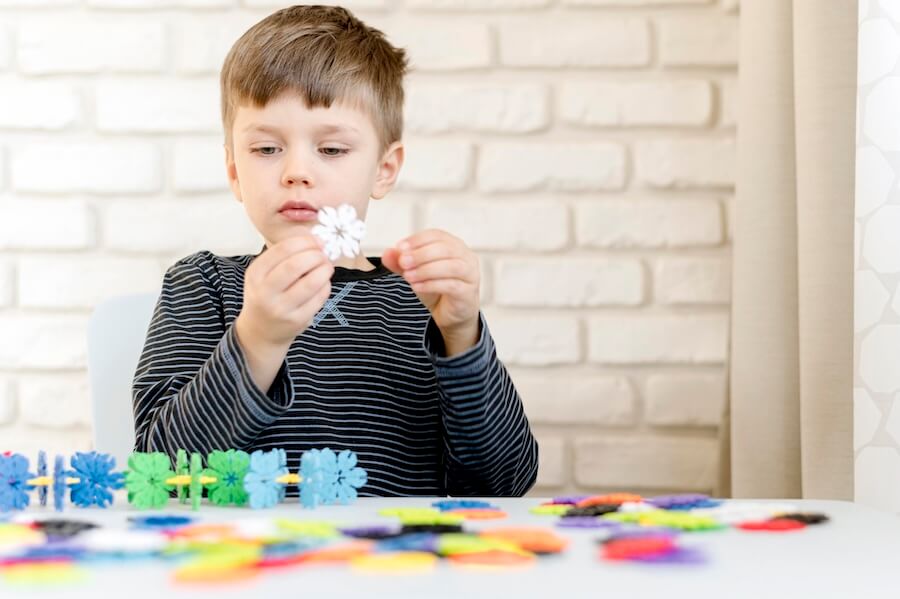Autism is a spectrum disorder that influences how individuals experience the world, interact with others, and engage with their environment. Some autistic individuals are fluent communicators who may only need occasional support to navigate social cues or work through challenges in therapy. Others might struggle with social or practical obstacles and feel frustrated without consistent coaching in key skill areas.
Meanwhile, some are nonspeaking, highly sensitive to sensory input, and may express themselves through emotional or behavioral reactions when their needs aren’t understood or addressed. They might rely on augmentative and alternative communication (AAC) tools, such as picture symbols or electronic devices, to share their thoughts and may benefit from assistance across various aspects of life.
Classification of Autism Levels
In 2013, the American Psychiatric Association (APA) published the fifth edition of the Diagnostic and Statistical Manual of Mental Disorders (DSM-5). It is a key reference used to diagnose various mental health conditions, including autism.
This edition outlined three levels of autism spectrum disorder (ASD) severity:
- Level 1- requiring support
- Level 2- requiring substantial support
- Level 3- requiring very substantial support
.jpg)
Level 1- Requiring Support
Characteristics of Level 1 Social Communication
Without proper support, level 1 autism or high functioning autism can cause challenges in social communication that lead to noticeable difficulties. This might include struggling to start conversations, responding in unusual or ineffective ways to others, or showing less interest in social interactions than peers.
For instance, someone who speaks in full sentences and participates in conversations may still struggle with the natural flow of back-and-forth dialogue and have difficulty forming friendships, often in ways that seem awkward or unsuccessful.
Characteristics include:
- Exhibits challenges with understanding or following social norms
- Seems uninterested in social interactions
- Experiences emotional or sensory regulation difficulties
Characteristics of Restricted & Repetitive Behaviors
Level 1 traits of restricted interests and repetitive behaviors may include:
- A need for extra strategies to stay organized
- Difficulty adapting to change or being inflexible in routines
- Experiencing stress during transitions
- Differences in attention span

Support Needs for Level 1 Autism
- Therapy sessions, either one-on-one or in groups, like Applied Behavior Analysis which focus on improving communication and social skills for autistic individuals.
- Assistance at school or work, including accommodations for factors like lighting or noise.
- Training in independent living skills to enhance confidence in managing a household or organizing a schedule.
- Identifying and addressing mental health needs and providing appropriate treatments.
Level 2- Requiring Substantial Support
Characteristics of Level 2 Social Communication
People with level 2 autism face significant challenges in verbal and nonverbal social communication that is noticeable, even with support. This may include limited ability to start social interactions and unusual or reduced responses to others’ social cues. For example, someone might use simple sentences, engage only in conversations about specific interests, and display noticeably unusual nonverbal communication.
Characteristics include:
- Speaking less or using noticeably different patterns of speech
- Lack of nonverbal cues such as facial expressions
- Displaying unusual social behaviors, like walking away in the middle of a conversation or not responding at all.
Characteristics of Restricted & Repetitive Behaviors
Level 2 traits of restricted interests and repetitive behaviors may include:
- A strong focus on specific topics
- Significant distress when dealing with disruptions or change.

Support Needs for Level 2 Autism
- Speech therapy to support verbal communication
- ABA or Behavioral therapy to encourage flexibility and address repetitive behaviors or stimming
- Assistive technologies and tools to aid in developing independent living skills
- Special education that provides individualized instruction that addresses specific learning needs and helps develop crucial academic and social skills in a controlled, supportive environment.
Level 3- Requiring very Substantial Support
Characteristics of Level 3 Social Communication
People with level 3 autism also known as profound autism face severe difficulties in verbal and nonverbal social communication that greatly impacts daily functioning. Individuals may initiate social interactions very rarely and respond minimally to others’ attempts at connection.
For instance, someone might have limited speech, rarely engage with others, and when they do, use unconventional methods primarily to express basic needs, responding only to very direct social cues.
Characteristics include:
- May be nonspeaking or repeat words and phrases they hear (echolalia)
- Prefer spending time alone and interact with others only to address immediate needs
- Struggle to engage in imaginative play with peers
- Show little interest in forming friendships
Characteristics of Restricted & Repetitive Behaviors
Level 3 traits of restricted interests and repetitive behaviors may include:
- Engaging in repetitive movements such as rocking, blinking, or spinning
- Experiencing intense distress when required to change tasks or shift their focus

Support needs for Level 3 Autism
- Alternative communication methods for nonverbal individuals, like augmentative and alternative communication (AAC) devices
- Support with daily care needs such as feeding, bathing, and other essentials
- Medications and treatments to address physical, cognitive, and mental health issues
- Backing to ensure access to necessary services and protection from discrimination and abuse
- Using incidental teaching to support learning through natural, everyday situations, helping individuals acquire functional skills such as engaging with objects or responding to basic visual cues.
- Extensive therapies, including applied behavior analysis (ABA), speech therapy, and/or occupational therapy (OT).
Conclusion
Autism is a spectrum disorder with varying degrees of severity, each requiring different levels of support. From those with mild communication challenges to individuals who require substantial or very substantial support, autism presents unique needs at every level.
Understanding these varying levels helps provide better-tailored interventions, such as therapy, assistive technologies, and individualized care plans. Hence, fostering an environment of support and understanding is key to improving the lives of individuals with autism.


